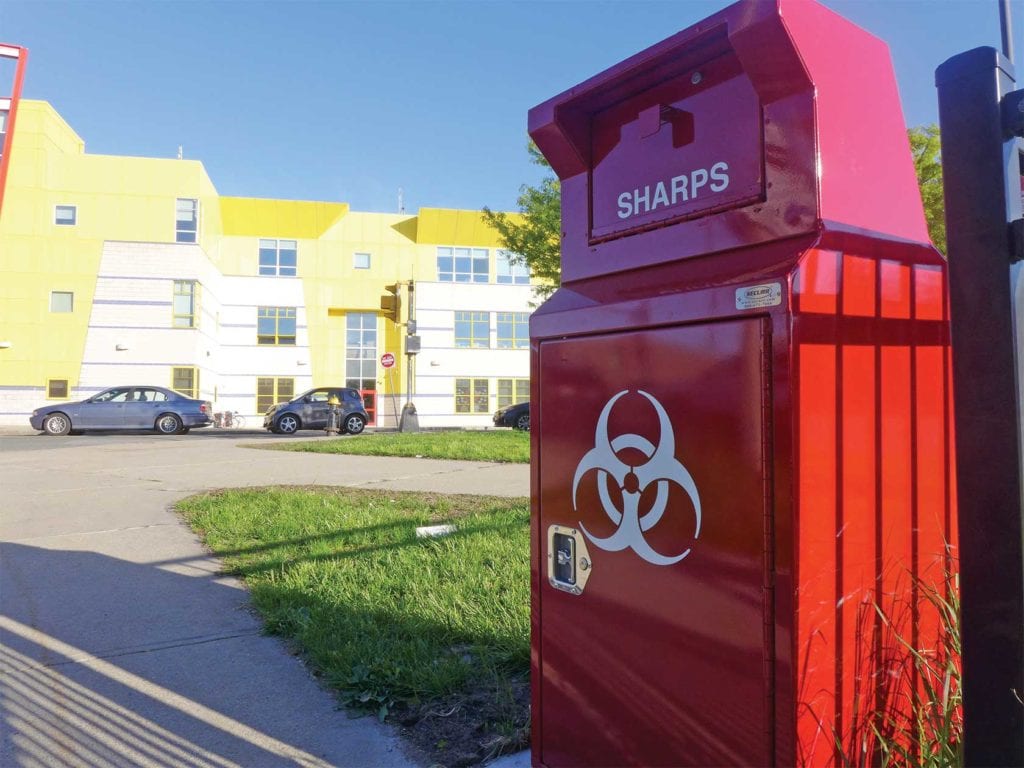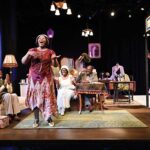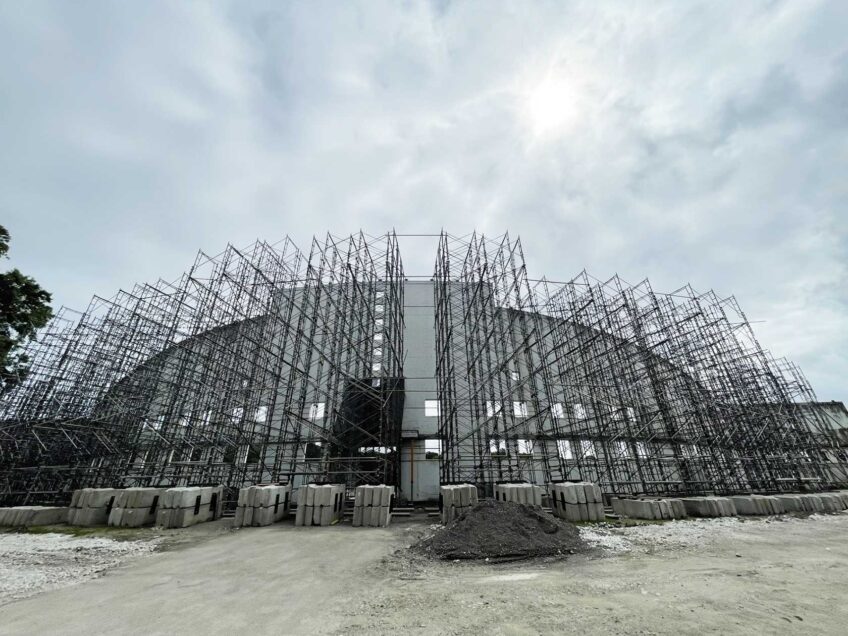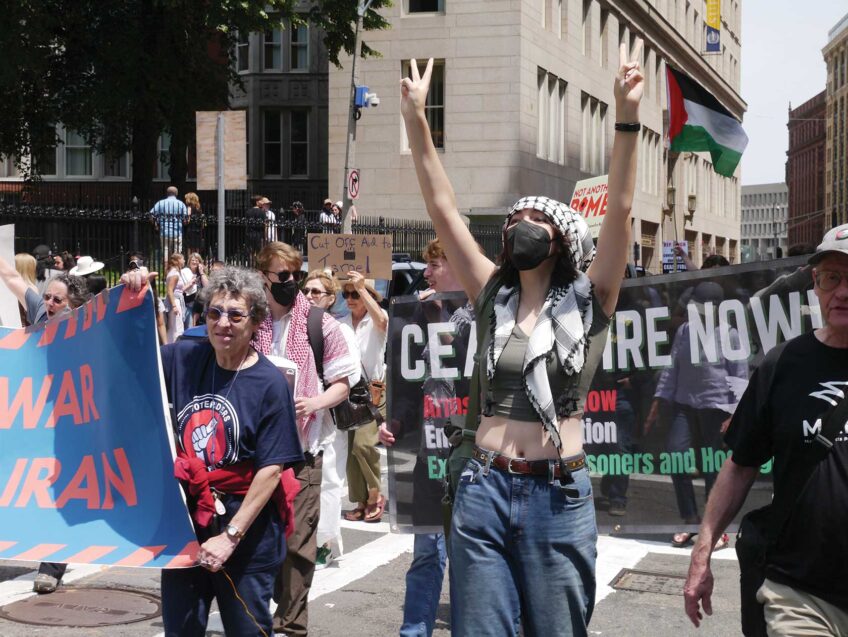South Bay crackdown raises concerns
Some fear users will spread from Melnea Cass

The surveillance video revealed a disturbing scene: on Aug. 1, a corrections officer on his way to the South Bay jail stops his car in the middle of Atkinson Street, exits his car and, following a brief confrontation, is brutally beaten by a group of men.
The reaction to the beating was swift. Police moved in the same day, and with what officers called “Operation Clean Sweep” moved the assemblage of homeless people and drug users out of the area surrounding the jail and arresting 19, most on outstanding warrants.
The following day, police followed up with a second sweep through the area, dubbed “Methadone Mile” for the concentration of drug treatment facilities located there.
In the days following the incident, activists and area residents began questioning the swift reaction to the incident. Why, in the five years that teachers and students from the Orchard Gardens K-8 School have been vigorously sounding an alarm, has there never been a swift reaction to the open drug use, discarded needles and prostitution on school grounds? Will the police keep up their enforcement? Will it drive the users deeper into residential neighborhoods? Is there a long-term plan to deal with the population of users?
“This is a recent incident shining a light on a continuing problem,” said District 7 City Councilor Kim Janey. “We know young children are being pricked by needles. What happened the other day and what’s been happening are unacceptable.”
Mayor Martin Walsh said the arrests made last week were in response to longstanding complaints about drug dealing in the neighborhood and an apparent rise in the severity of problems in the area.
“There seems to be a little more violence going on down there,” he said.
While to some, the Clean Sweep operation near the South Bay jail seemed more aimed at clearing that area than at improving the lot of the drug users, Walsh said his office remains focused on helping people struggling with addiction to get the services they need. He notes that the city has increased its budget for recovery service by 35 percent and is working to increase recovery programs in the area.
“We have a lot more outreach counselors,” he told the Banner. “We have a lot more one-on-one interventions going on in the community. We’re working to get more people into treatment.”
A spreading problem?
Janey and others say the nuisances caused by the population in the South Bay area have already spread into the surrounding neighborhoods. In a message posted on Facebook, state Rep. Liz Miranda noted that her parents, who live near Clifford Park in Roxbury, had the front door of their home kicked in by burglars during the middle of the day, an incident she attributed to the increased number of addicts in the area.
In her post, she argued for both better services and more protection for neighborhood residents.
“I hope we can actually have an AND conversation versus an OR conversation, because people need help, but the quality of life of the residents who live there, kids who go to the Mason School and Orchard Gardens School and those workers in the companies located near there — matter too,” Miranda wrote.
Janey said she would like to see the city share a comprehensive plan for the challenges posed by the drug-addicted population in the South Bay area.
“There has to be a plan that puts treatment at the forefront and protects our residents,” she said. “We can’t continue to live like this.”
While much of the population of people addicted to drugs is concentrated around Melnea Cass Boulevard and Massachusetts Avenue, many make their way into the surrounding residential areas and commercial districts, including Dudley Square.
On Monday morning, Janey said, she confronted a man and a woman shooting up with hypodermic needles on the steps in front of the Citizens Bank in Dudley Square. In one photo Janey showed a reporter, the woman — needle in vein — turns and smiles at Janey. Eventually, both left.
“For residents, this is an unbearable situation,” she said. “People want to be compassionate, but they’re frustrated.”
Schoolchildren affected
Students and teachers at the Orchard Gardens K-8 School face a daily barrage of drug users shooting up, nodding off or even engaging in acts of prostitution, said teacher Suzie McGlone. For many of the students who walk to school, as does McGlone herself, navigating the sidewalks and streets in the area can be harrowing.
“The students say they know the city doesn’t care about them,” she said. “They feel unsafe in the area as they approach school. We’ve been working on this for a few years, but nothing has changed. We would have appreciated some attention.”
Even on school grounds, students are not necessarily safe. Twice in the last year, students at the school were pricked by discarded needles. While city officials installed a needle collection box near the school and now regularly dispatch teams to clean the school grounds, teachers at the schools say they still find needles in the schoolyard. In December, students, teachers and parents from the school blocked traffic on Melnea Cass Boulevard in a demonstration protesting the unsafe conditions at the school.
Former state Rep. Carlos Henriquez, who works with teens at Clifford Park, says he has been advocating for the last five years for a more vigorous response to the proliferation of discarded needles in the area.
“To see Orchard Gardens students hold protests and not get a response is discouraging,” he said. “It sends a bad message to residents. There are people who walk through there every day.”
Nonresident users
Adding fuel to the resentment over the population of users in the South Bay area is news that half of those arrested in the sweeps were not from Boston.
Walsh said the city will remain open to anyone seeking treatment for drug addiction.
“If they want to get help or treatment, they’re more than welcome to,” he said. “Come to the city of Boston. We’ll never say no to people. But if you want to come into the city and start trouble, don’t even bother.”
Miranda, in her Facebook post, called for a statewide solution to the problems stemming from the sizeable population of people with drug addiction in Boston, many of whom aren’t from the city. She argued that the communities surrounding Boston could do more to provide treatment to their own residents.
“This is a statewide problem, and I hope we have a statewide conversation not limited to, but definitively including how NIMBYism, structural racism and the saturation of facilities in a particular area (mainly poor, working class and of color) is not just, equitable, humane nor does it work,” she wrote. “These people that are suffering are all of our children, too. Residents suffer too.”








